
Product Model:
ESCxx12-60D(I)Data Rate:
1.25GWavelength:
1470~1610nmDistance:
60KMConnector:
LCFiber Type:
SMDDM:
YESProduct Origin:
ChinaShipping Port:
ShenZhen/HK
Product Features
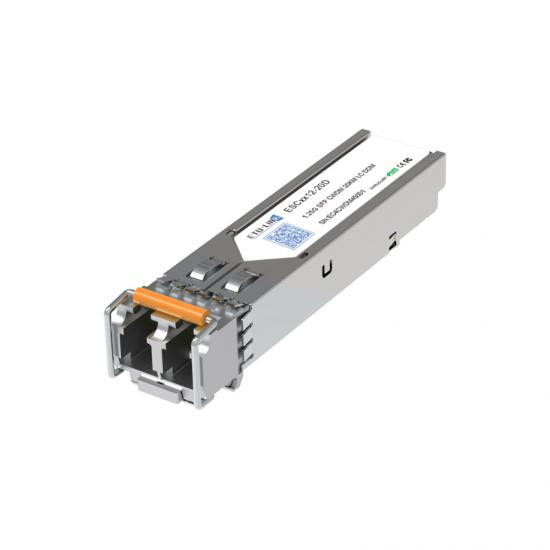 |
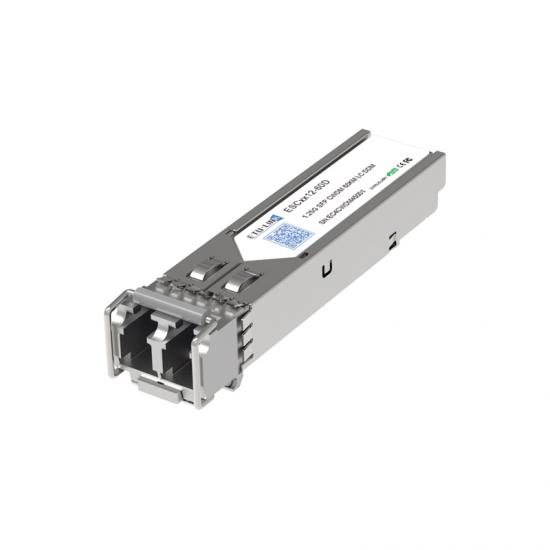 |
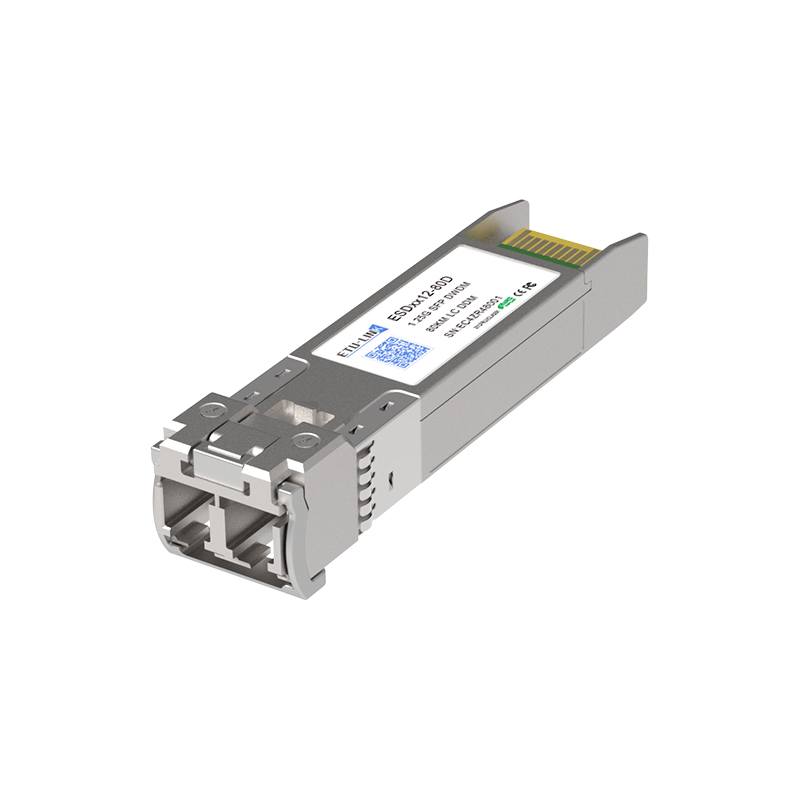 |
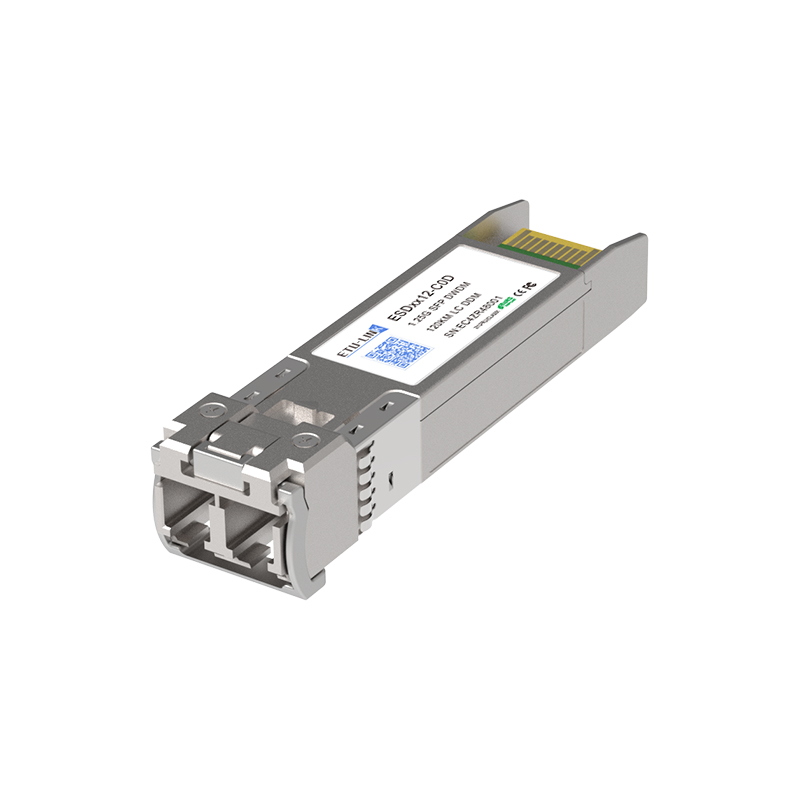 |
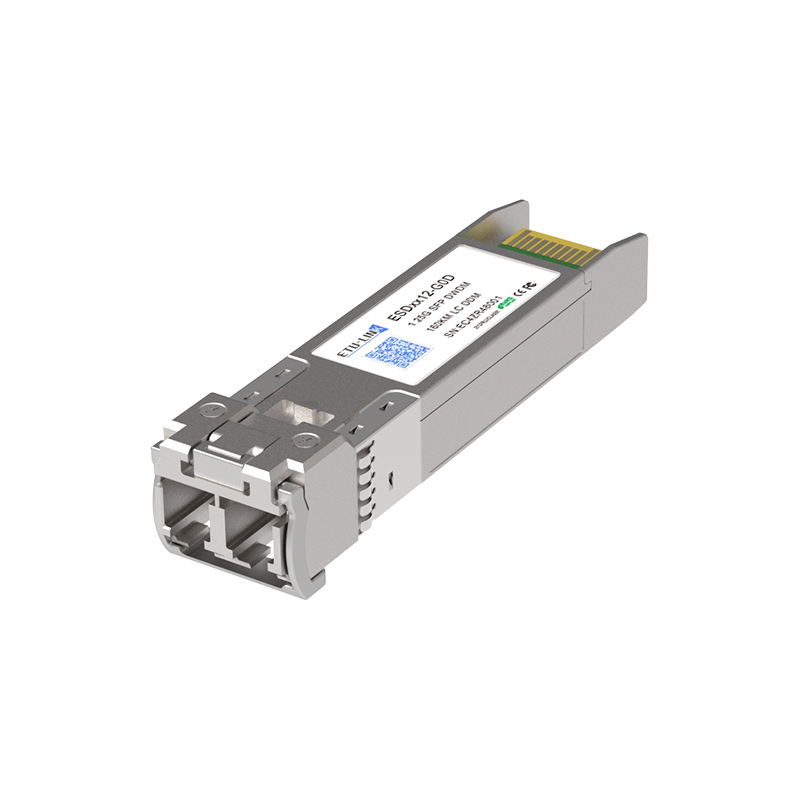 |
| SFP CWDM 20KM | SFP CWDM 60KM | SFP DWDM 80KM | SFP DWDM 120KM | SFP DWDM 160KM |
|
1.25G |
1.25G |
1.25G |
1.25G | 1.25G |
|
20KM |
60KM |
80KM |
120KM |
160KM |
|
CWDM |
CWDM |
DWDM |
DWDM |
DWDM |
|
LC |
LC |
LC |
LC |
LC |
|
SM |
SM |
SM |
SM |
SM |
|
DDM |
DDM |
DDM |
DDM |
DDM |
|
COM: 0°C ~70°C EXT: -20°C ~85°C IND: -40°C ~85°C |
COM: 0°C ~70°C |
COM: 0°C ~70°C |
COM: 0°C ~70°C |
COM: 0°C ~70°C |
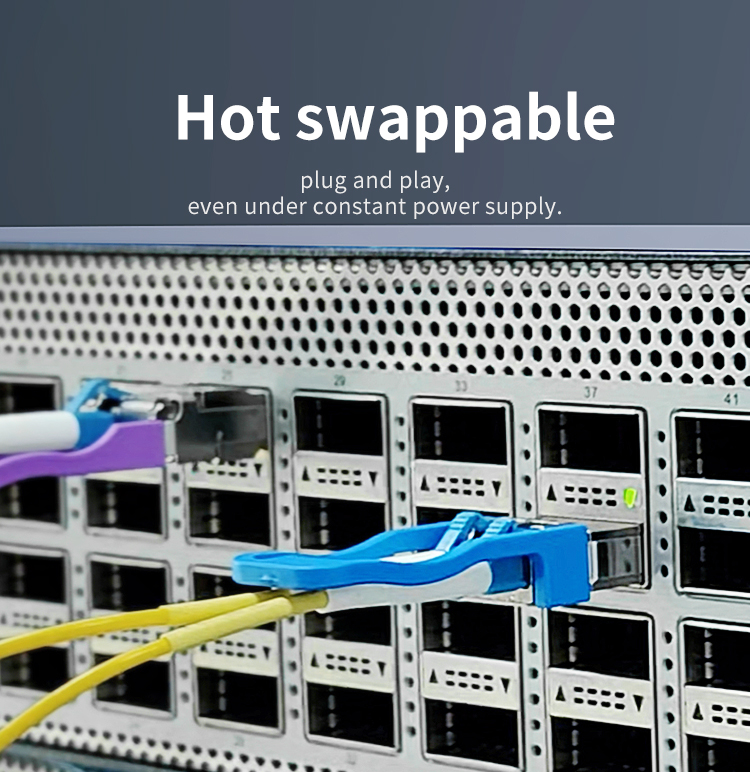
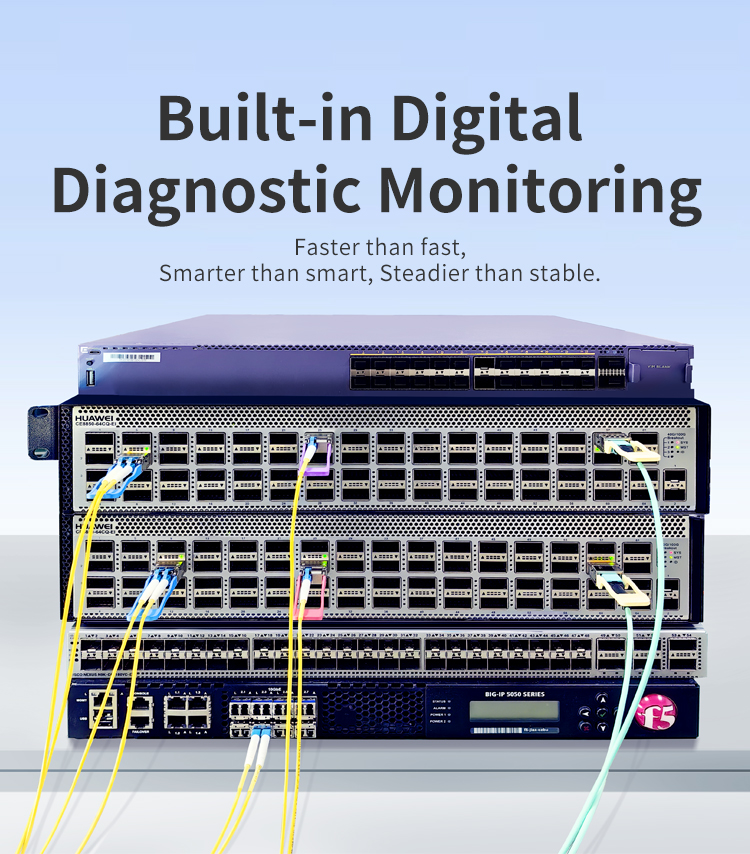
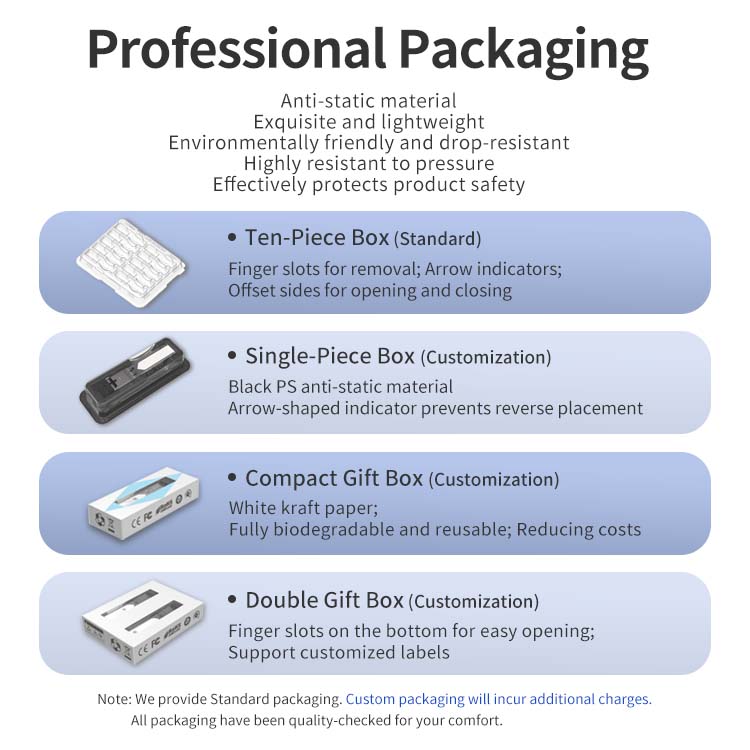
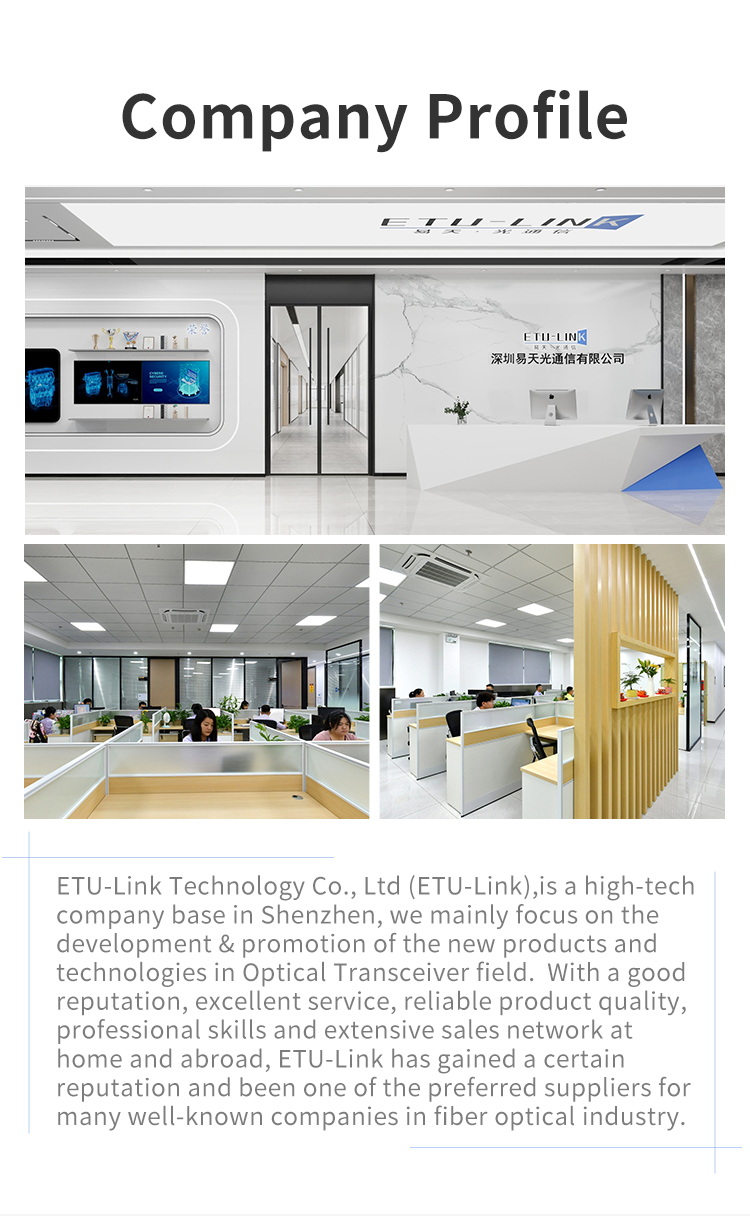

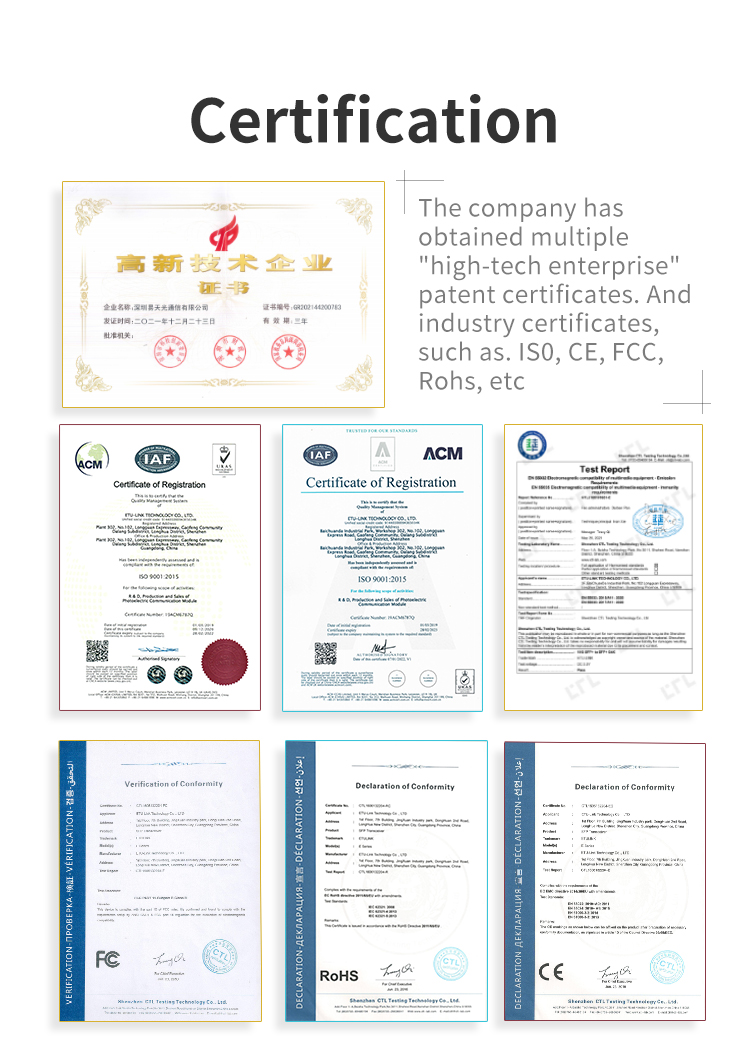
Q1: What is a 1.25G SFP transceiver?
A1: 1.25G SFP (Small Form-factor Pluggable) is a compact, hot-swappable optic module supporting 1.25Gbps speeds for fiber or copper networks, commonly used in Gigabit Ethernet and Fiber Channel applications.
Q2: What are the typical applications of 1.25G SFP?
A2: Gigabit Ethernet (1000BASE-SX/LX/ZX)
Fiber Channel (1G/2G/4G)
SDH/SONET networks
Q3: What is the maximum distance for 1.25G SFP LX?
A3: The 1000BASE-LX variant supports up to 10km over single-mode fiber (SMF), while 1000BASE-SX reaches 550m over multimode fiber (MMF).
Q4: What wavelengths do 1.25G SFP modules use?
A4: SX: 850nm (MMF); LX/ZX: 1310nm/1550nm (SMF)
Q5: How does a BIDI SFP differ from a standard SFP?
A5: Standard SFPs require two fibers (one for TX, one for RX), while BIDI SFPs use one fiber with wavelength-division duplexing (WDM).
Q6: How far can a 1.25G SFP ZX module transmit data?
A6: The ZX variant supports extended distances up to 80km over single-mode fiber, ideal for long-haul applications like telecom backbones.
Q7: Are 1.25G SFP modules compatible with industrial temperature ranges?
A7: Yes, many industrial-grade modules operate in extreme temperatures from -40°C to 85°C, ensuring reliability in harsh environments like outdoor networks.
Q8: What is the role of Digital Diagnostics Monitoring (DDM/DOM) in 1.25G SFP?
A8: DDM/DOM provides real-time tracking of parameters like temperature and optical power, enabling proactive maintenance and fault detection for network stability.
Q9: Can 1.25G SFP modules connect to CWDM or DWDM systems?
A9: Yes, specialized CWDM and DWDM variants exist for wavelength division multiplexing, allowing efficient bandwidth usage in metro or data center networks.
Q10: Why choose BIDI over standard SFP for FTTH?
A10: BIDI SFPs halve fiber usage, reducing infrastructure costs in passive optical networks (PON).
If you are interested in our products and want to know more details,please leave a message here,we will reply you as soon as we can.
Categories
© Copyright: 2025 ETU-Link Technology CO ., LTD All Rights Reserved.

IPv6 network supported
Friendly Links:
易天官网